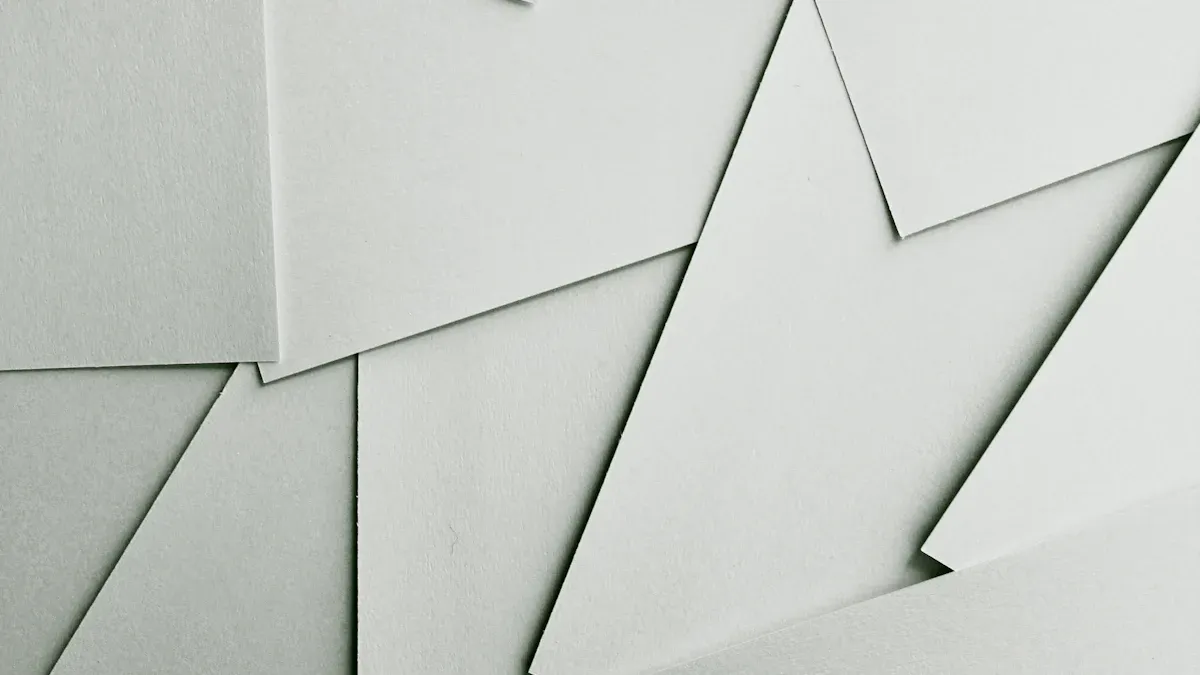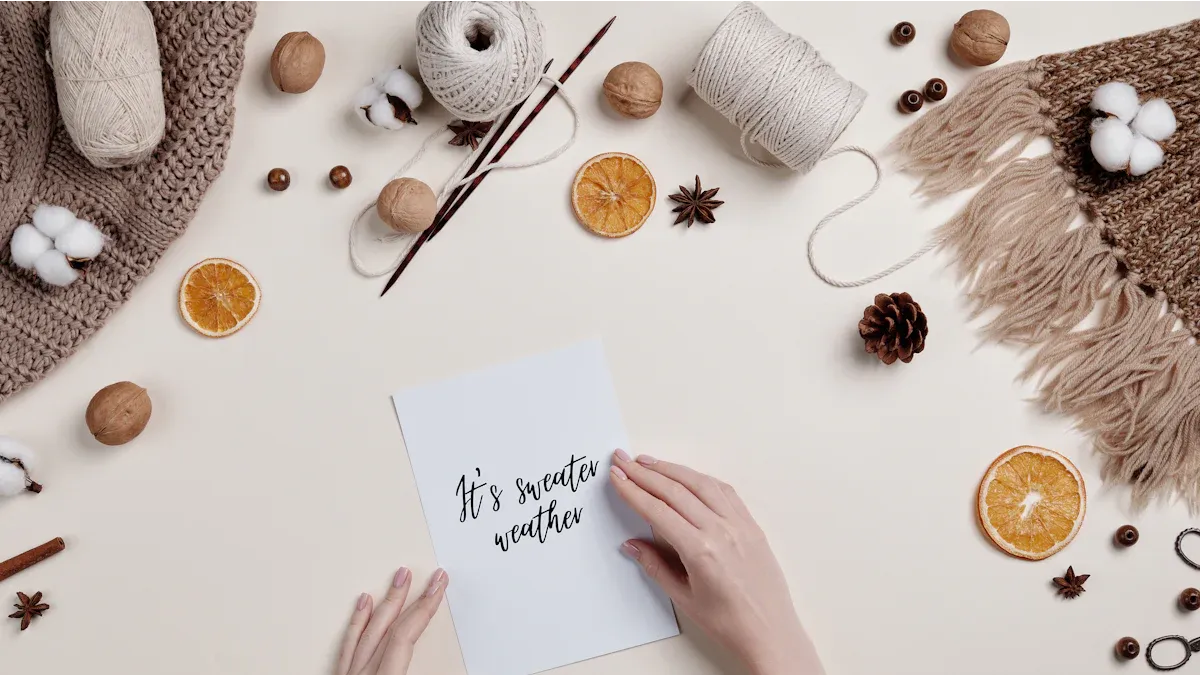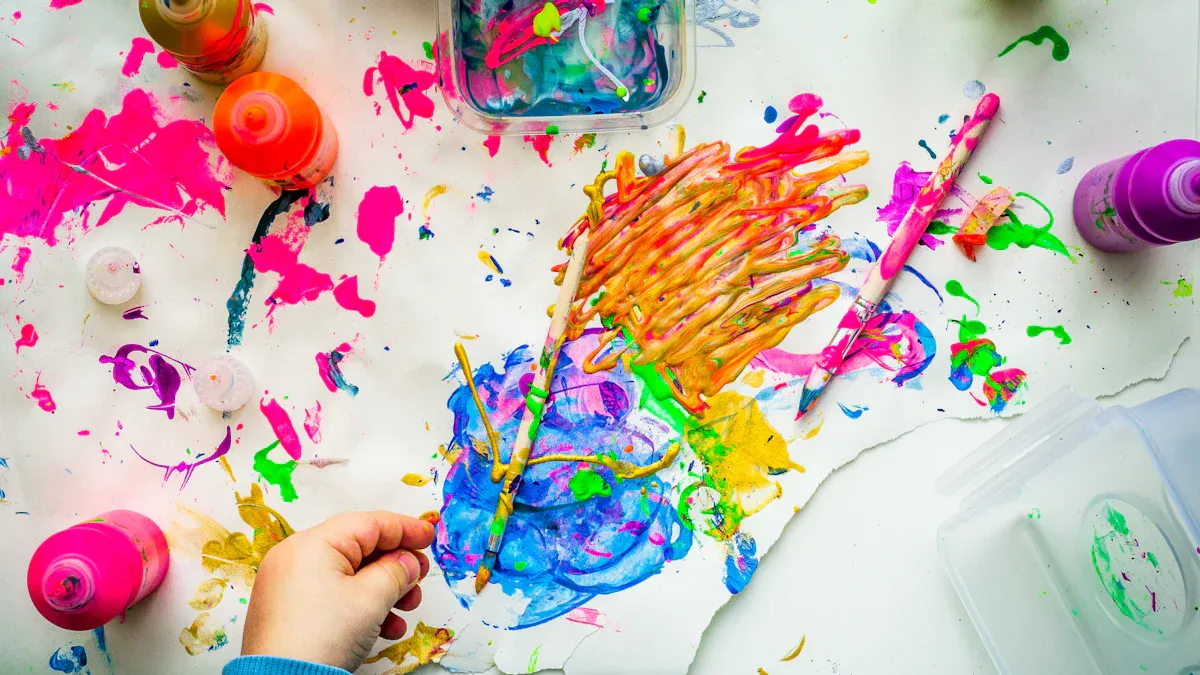
White Art Card Board serves as an essential material for artists and crafters, offering a smooth surface that enhances precision and detail. Its neutral tone creates a perfect canvas for vibrant designs. Compared to Gloss Coated Art Board or Gloss Art Coated Paper, it provides unmatched versatility. C2s Art Board Paper also complements its quality, making it a reliable choice.
The Versatility of White Art Cardboard

Perfect for Diverse Art and Craft Projects
White Art Card Board adapts to a wide range of creative applications. Artists use it for sketching, painting, and mixed-media projects, while crafters rely on it for scrapbooking, card-making, and model-building. Its sturdy composition supports intricate designs and heavy embellishments without bending or tearing. Educators often incorporate it into classroom activities, enabling students to explore their creativity through hands-on projects.
Tip: Pair White Art Card Board with high-quality markers or paints to achieve vibrant results that stand out.
A Neutral Base for Vibrant and Detailed Designs
The neutral tone of White Art Card Board enhances the vibrancy of colors and the precision of detailed artwork. It provides a clean, blank canvas that allows artists to experiment with bold contrasts and intricate patterns. Designers often choose this material for prototypes and presentations because its smooth surface ensures professional-quality results. Whether creating abstract art or realistic illustrations, the board’s neutral base amplifies the impact of every stroke and shade.
Suitable for All Skill Levels, from Beginners to Experts
White Art Card Board caters to creators of all skill levels. Beginners appreciate its forgiving surface, which accommodates trial and error without compromising the final outcome. Professionals value its durability and ability to support advanced techniques, such as embossing and layering. Its versatility makes it an ideal choice for hobbyists, students, and seasoned artists alike.
Note: For beginners, starting with smaller-sized boards can help build confidence before tackling larger projects.
Quality and Durability of White Art Cardboard
Long-Lasting Material for Creative Projects
White Art Card Board offers exceptional durability, making it a reliable choice for projects that require longevity. Its sturdy construction resists wear and tear, even when subjected to frequent handling or heavy embellishments. This durability ensures that finished pieces maintain their integrity over time, whether displayed in a gallery, stored in a portfolio, or used in educational settings.
Artists and crafters value its ability to withstand various mediums, from watercolors to adhesives, without warping or deteriorating. This resilience makes it an ideal material for projects that demand both strength and aesthetic appeal.
Tip: Store completed works made with White Art Card Board in a dry, cool environment to further extend their lifespan.
Smooth Surface for Precision and Vibrancy
The smooth surface of White Art Card Board enhances the precision of every artistic stroke. It provides an even texture that allows pens, markers, and brushes to glide effortlessly, resulting in clean lines and vibrant colors. This feature is particularly beneficial for detailed work, such as fine illustrations or intricate patterns.
Designers often choose this material for its ability to showcase the full spectrum of colors without blotching or uneven absorption. The smooth finish also supports advanced techniques like layering and blending, enabling creators to achieve professional-quality results.
Note: For best results, use high-quality tools and materials that complement the board’s smooth texture.
Acid-Free Composition for Archival-Quality Work
White Art Card Board’s acid-free composition ensures that artwork remains free from yellowing or fading over time. This archival-quality feature makes it a preferred choice for preserving important pieces, such as family scrapbooks, professional portfolios, or commemorative designs.
Acid-free materials prevent chemical reactions that can degrade paper-based products. By using this type of board, creators can confidently produce works that retain their original vibrancy and structure for years to come. Museums, galleries, and collectors often rely on acid-free materials to safeguard valuable art and documents.
Callout: Investing in acid-free White Art Card Board is a smart choice for anyone looking to create lasting impressions.
Why White Art Cardboard Outshines Other Materials

Advantages Over Colored or Textured Cardboard
White Art Card Board offers a clean, neutral surface that enhances the vibrancy of colors and the clarity of designs. Unlike colored or textured cardboard, it does not interfere with the visual impact of artwork. Artists and crafters can rely on its smooth finish to create intricate patterns and bold contrasts without distractions. Its uniformity also makes it a preferred choice for professional presentations and detailed prototypes.
Tip: Use White Art Card Board for projects requiring precision and vibrant color application to achieve the best results.
Superior to Standard Paper and Cardstock
White Art Card Board surpasses standard paper and cardstock in terms of quality and performance. Its smooth surface ensures even ink absorption, resulting in sharp and vibrant designs. The high whiteness of the board enhances color accuracy, making it ideal for detailed illustrations and professional-grade projects. Additionally, its sturdy composition supports heavier embellishments and advanced techniques like embossing and layering.
- Key benefits over standard paper and cardstock:
- Smooth surface for precision.
- High whiteness for vibrant colors.
- Excellent ink absorption and inking performance.
These qualities make it a versatile and reliable material for both artistic and practical applications.
Cost-Effective Without Sacrificing Quality
White Art Card Board provides exceptional value by combining affordability with premium quality. Its durability and versatility reduce the need for frequent replacements, saving both time and money. Compared to other materials, it offers a professional-grade surface at a fraction of the cost. This cost-effectiveness makes it accessible to students, hobbyists, and professionals alike.
Callout: Choosing White Art Card Board ensures high-quality results without exceeding your budget.
Tips for Choosing and Using White Art Cardboard
Selecting the Right Thickness and Size for Your Needs
Choosing the appropriate thickness and size of White Art Card Board depends on the specific requirements of your project. Thicker boards work well for structural designs like models or 3D crafts, as they provide stability and strength. Thinner boards are ideal for detailed work, such as intricate cutouts or layered designs.
Artists and crafters should also consider the dimensions of their projects. Large boards suit murals or posters, while smaller sizes are better for greeting cards or prototypes. Matching the board’s specifications to the project ensures optimal results and minimizes material waste.
Tip: Keep a variety of thicknesses and sizes on hand to accommodate different creative needs.
Techniques for Cutting, Folding, and Shaping
Mastering basic techniques for cutting, folding, and shaping White Art Card Board enhances the quality of your work. For precise cuts, use a sharp blade and a sturdy ruler to guide straight lines. When working on tight corners, move the board instead of the cutting tool to maintain accuracy.
To create clean folds, use a scoring tool to lightly crease the surface before bending. This prevents cracking and ensures smooth edges. For curved designs, score the board along the desired lines to create folding guides. These techniques allow creators to achieve professional results with minimal effort.
- Steps for effective cutting and folding:
- Watch tutorials to learn positive/negative space cutting methods.
- Use a cardboard template for assembling designs.
- Score the board before folding to avoid tears.
Note: Always use a cutting mat to protect your workspace and maintain blade sharpness.
Creative Ways to Maximize Its Potential
White Art Card Board offers endless possibilities for creative expression. Use it as a base for mixed-media projects, combining paints, markers, and embellishments. Create layered artwork by cutting and stacking pieces to add depth and dimension. For functional designs, craft custom packaging, gift boxes, or decorative displays.
Educators can incorporate this material into classroom activities, encouraging students to explore their creativity through hands-on projects. Its versatility also makes it a favorite for DIY enthusiasts, who use it to design home décor, party decorations, and personalized gifts.
Callout: Experiment with different tools and techniques to unlock the full potential of White Art Card Board.
White Art Card Board remains an essential material for creative projects. Its versatility supports diverse applications, while its quality ensures professional results. Artists and crafters can rely on its affordability to achieve their goals without compromise. Investing in this material elevates creative endeavors and provides a reliable foundation for artistic success.
FAQ
What makes white art cardboard different from regular cardboard?
White art cardboard features a smooth, acid-free surface ideal for precision work. Its durability and neutral tone make it superior for artistic and professional applications.
Can white art cardboard handle heavy embellishments?
Yes, its sturdy composition supports embellishments like beads, adhesives, and layered designs. It resists bending or tearing, ensuring projects maintain their structure and appearance.
Is white art cardboard suitable for children’s projects?
Absolutely! Its forgiving surface and durability make it perfect for school crafts and beginner-level projects. Children can experiment freely without worrying about damaging the material.
Post time: Jun-03-2025
